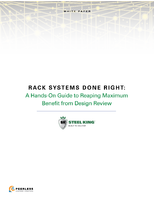Siemens Brings HelWin Cluster Windfarm on Line
Share:
Offshore HVDC platform for low-loss transmission to the onshore grid
Working in consortium with the Italian cable manufacturer Prysmian, Siemens Energy is erecting HelWin 2, the link between the North Sea offshore windfarm Amrumbank West and the onshore grid. The customer is TenneT TSO GmbH of Bayreuth, Germany. The order brings more than half a billion euros onto the consortium's books. The grid connection, designed as a high-voltage direct-current transmission link, has a rating of 690 megawatts (MW) and is scheduled to be operational by 2015.
Amrumbank West will be built in the North Sea, about 55 kilometers from the mainland, 35 kilometers north of Helgoland, and 37 kilometers west of the North Frisian island of Amrum. The wind farm will have a power capacity between 300 and 400 MW. Together with the Meerwind and North Sea East offshore windfarms, Amrumbank West is part of the North Sea cluster HelWin. "This order to connect the Amrumbank West windfarm to the power grid underscores our unchallenged market leadership in grid connections for offshore windfarms. So far, we have booked orders to link up offshore windfarms delivering a total electrical generating capacity of over 6000 megawatts," says Udo Niehage, CEO of the Power Transmission Division within Siemens' Energy Sector.
The centerpiece of the HelWin 2 link-up is the offshore converter platform HelWin beta, on which the Siemens HVDC Plus system for high-voltage direct-current (HVDC) transmission is installed. It also houses two power transformers and the gas-insulated high-voltage switchgear. Siemens is responsible for turnkey supply of the fully equipped floating and self-erecting platform, also known as a wind power offshore substation, or WIPOS for short. TenneT has also awarded Siemens a contract to carry out all maintenance work on the platform and on the on-shore transformer substation for an initial period of five years. This includes coordination and logistics efforts as well as performance of all necessary inspections, preventive and corrective maintenance, spare parts management, and drawing up the maintenance schedules.
The 3-phase alternating current generated by the wind turbines will be bundled on the offshore transformer platform and transmitted to the converter platform via high-voltage cable. There the alternating current arriving at a voltage of 155 kV will be stepped up and converted into direct current in the Siemens HVDC system. The electric power will then be transmitted at a voltage of ±320 kV via a submarine high-voltage cable from the feed-in point on the platform to the grid connection point in Büttel, northwest of the city of Hamburg, over 130 kilometers away. There, a transformer and converter substation will convert the power back into alternating current for onward transmission and distribution.
Another special feature of the HelWin beta offshore converter platform is that it will be connected via a bridge to its parent platform HelWin alpha to allow shared use of the helicopter deck and crew quarters. There will also be an AC cable link to the busbar of the platform's 155 kV switchgear and a link to the emergency power system. The HelWin alpha platform, via which the North Sea East windfarm is connected to the grid, forms an integral part of the Helwin1 link-up.
High-voltage direct current transmission technology significantly reduces transmission losses. HVDC is the only viable solution for economical, low-loss transmission of power via cable over distances in excess of 80 kilometers, because in an alternating current cable of that length a large part of the electrical energy transmitted would be lost in the form of reactive power. Siemens has developed its HVDC Plus system for precisely such cases. HVDC Plus is a new generation of power converters based on self-commutated voltage-sourced-converter technology in modular multilevel-converter configuration (VSC MMC). Siemens is at the cutting edge of technology in this field. Modular, multilevel VSC technology reduces the complexity and thus the space taken up by such systems - an essential prerequisite for deployment on offshore platforms. What is more, HVDC Plus produces an almost ideally sinusoidal AC waveshape and a smoothed DC voltage along the transmission line, practically eliminating the need for filters.
Energy-efficient grid connection of offshore wind farms is part of Siemens' Environmental Portfolio. In fiscal 2010, revenue from the Portfolio totaled about EUR 28 billion, making Siemens the world's largest supplier of eco-friendly technologies. In the same period, our products and solutions enabled customers to reduce their carbon dioxide (CO2) emissions by 270 million tons, an amount equal to the total annual CO2 emissions of the megacities Hong Kong, London, New York, Tokyo, Delhi and Singapore.
The Siemens Energy Sector is the world's leading supplier of a complete spectrum of products, services and solutions for the generation, transmission and distribution of power and for the extraction, conversion and transport of oil and gas. In fiscal 2010 (ended September 30), the Energy Sector had revenues of approximately EUR 25.5 billion and received new orders totaling more than EUR 30.1 billion and posted a profit of more than EUR 3.3 billion. On September 30, 2010, the Energy Sector had a work force of more than 88,000. Further information is available at: http://www.siemens.com/energy.
Siemens AG
Corporate Communications and Government Affairs
Wittelsbacherplatz 2, 80333 Munich
Germany
Media Relations: Dietrich Biester
Telephone: +49 9131 18-4974
E-mail: dietrich.biester@siemens.com
Siemens AG
Energy Sector - Power Transmission Division
Freyeslebenstr. 1, 91058 Erlangen, Germany




